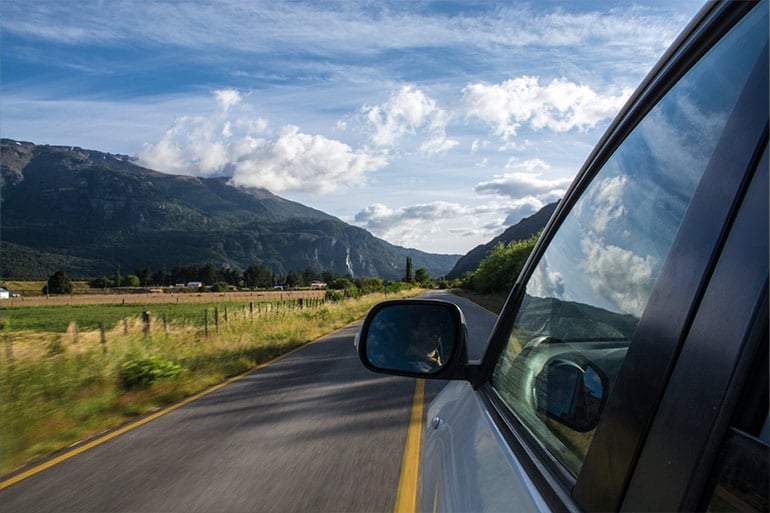May 7, 2024
September 13, 2023
If you live or work in Madrid and need to travel by car, you will no doubt be aware that there are various rules and restrictions you need to follow, alongside the general highway code, to drive legally in the city centre. This is because of government initiatives that have been implemented over the last few years in order to control the traffic in the central zone, due to its negative impact on the air quality.
Let, me explain a little further… In order to combat the worryingly high levels of pollution caused by motorized traffic in the city, the Madrid Town Council implemented driving in Spain requirements to limit access to a specific zone called Madrid Central. This was done as part of the Madrid 360 Environmental Sustainability Strategy, and the aim is to “protect human health and the urban environment” by reducing traffic pollution in the areas that are most badly affected.
Instead of using the arbitrary distinction of controlling access according to registration number (odd or even) which was a system previously implemented in the city, the rules are now based on the most unecological or dirtiest cars being subject to the greatest restrictions. Thus, instead of only trying to limit the number of daily vehicles, the strategy, to maximise the positive impact on air quality, meant that the laws were adapted to encourage the use of public transport and favour electric and ECO cars (such as hybrids). Therefore, pushing people with older, more polluting cars to either switch to more ecological options or face a ban of being able to drive in Madrid Central altogether.
It may seem unfair that not everyone who has a vehicle can actually access certain areas of the city, but the point is to try and make the city a cleaner safer place for all residents. Now, I know it can be daunting for new residents and expats to work out IF AND WHERE they can enter the city by motor vehicle, but never fear – my aim is to tell you all about the driving in Spain requirements for the Madrid Central zone.

How do they classify if a vehicle can enter?
The new access regulations depend on DGT (Direccion General de Trafico) environmental ratings and obtaining a DGT label. If you haven’t already done so, you need to request a label/sticker for your car or motorcycle. The DGT classifies vehicles depending on their environmental impact and will dictate where you are allowed to drive your car in Madrid.
Your vehicle will be classified as one of the following:
-
0 / Zero emissions: these include battery electric vehicles (BEV), extended autonomy electric vehicles (EAEV), and plug-in hybrid electric vehicles (PHEV) with minimum autonomy of 40km or fuel cell vehicles.
-
ECO: this includes plug-in hybrid vehicles with minimum autonomy of 40km, non-plug-in hybrid vehicles (HEV), compressed and liquified natural gas propelled vehicles (CNG and LNG) or liquified petroleum gas vehicles (LPG). In any case they must comply with the criteria of label C (see below).
-
C: Light gasoline and diesel cars and lorries registered as of January 2006 (if gasoline) and 2014 (if diesel). Vehicles with more than 8 seats and heavy vehicles (both gasoline and diesel) registered after 2014.
-
B: Gasoline light cars and lorries registered as of January 2000 and diesel vehicles registered as of January 2006. Vehicles with more than 8 seats and heavy vehicles (both gasoline and diesel) registered as of 2005.
-
No label (formerly A): these are the most contaminating cars. Gasoline cars registered before January 2000 and diesel cars registered before 2006, as well as heavy vehicles registered before 2014. These cars will not receive a DGT label and will face many complications in Madrid. Vehicles with no label may not access the Madrid Central zone unless invited by a resident or if they have a garage. They will not be able to park in the centre’s underground public car parks.

What are the restrictions?
Madrid Central's operating hours are from 7:00 in the morning to 22:00 at night.
As a rule, during these times there are no restrictions for the circulation of vehicles labelled as 0 and ECO at any time, and 0 vehicles can park in Regulated Parking Services (on street parking) with no limit, while ECO vehicles can park for two hours during the times of regulated parking. B and C vehicles can only use car parks or a private garage. Vehicles without environmental stickers cannot access Madrid Central at all.
Are there any exceptions?
There are some exceptions to the rule which allow access to certain groups of people with specific circumstances.
-
Residents living in a property that is located in the central zone or people who own a private garage in the central zone.
-
Vehicles adapted to be driven or to transport people with reduced mobility that have an official disabled badge.
-
Public transport and taxis
-
Emergency vehicles, armed forces vehicles and official historic vehicles
-
Other exemptions and certain cases include people who work at night and cannot use public transport or distribution and commercial vehicles.
If you think that you fit into one of these categories, you will need to check the exemption rules for your specific circumstance in advance and confirm that you have permission to drive in the restriction zones with the DGT before you enter - otherwise, you could face a fine that cannot be retracted.
Where are the restricted zones?
Madrid Central is the designated low pollution zone that is referred to as ZBEDEP (Zona de Bajas Emisiones de Especial Protección, Distrito Central). It encompasses the core central areas or districts of Madrid, including the barrios of Palacio, Embajadores, Cortes, Justicia, Universidad and Sol.
The key streets that are included in this zone are: calle Alberto Aguilera, glorieta de Ruiz Jiménez, calle Carranza, glorieta de Bilbao, calle Sagasta, plaza de Alonso Martínez, calle Génova, plaza de Colón, paseo de Recoletos, plaza de Cibeles, paseo del Prado, plaza de Cánovas del Castillo, plaza del Emperador Carlos V, ronda de Atocha, ronda de Valencia, glorieta de Embajadores, ronda de Toledo, glorieta de la Puerta de Toledo, ronda de Segovia, cuesta de la Vega, calle Mayor, calle Bailén, plaza de España, (lateral continuación de la cuesta de San Vicente), calle Princesa y calle Serrano Jover.
The free circulation of vehicles is allowed on all the streets that make up the perimeter of the ZBEDEP “Central District”, as well as on the following roads or sections of these: calle Santa Cruz de Marcenado (de calle Serrano Jover a calle Mártires de Alcalá), calle Mártires de Alcalá, calle Seminario de Nobles, avenida Gran Vía de San Francisco, calle Bailén, calle Algeciras, cuesta Ramón, calle Ventura Rodríguez (de calle Princesa a calle Duque de Liria), calle Duque de Liria (de calle Ventura Rodríguez a calle Princesa)
If your city geography or knowledge of specific street names is limited, you can find a really useful map to show you the zone more visually.
What about the wider zone inside the M30?
It is important to note that the driving requirements/restrictions of Madrid Central have also been subject to more recent changes to further the attempts to increase air quality and lower emissions to help Madrid city as a whole become a Low Emission Zone or ZBE (Zona de Bajas Emisiones).
In addition to Madrid central there has been recent annual increases in the size of the area that the most polluting vehicles are not be able to enter, by the creation of “territorial rings”.
From the beginning of 2022 vehicles that have no DGT label were not be permitted circulate within the M-30 and then from January 2023, this was increased to state that these vehicles are not be able to actually drive on the M-30. From the 1st of January 2024, the protective area will increase again to cover any public urban road in the municipality of Madrid.
The plan is that the regulation will continue to be reviewed every year, so it is important as a car owner to keep yourself up to date with the annual changes.

What are the penalties?
The fine for non-compliance with the driving requirements in Madrid Central is currently €90, however, if you can pay promptly, within 20 days of the notification, you get a reduction of 50% to 45€. It is important to point out that the government's traffic law provides for fines of up to €200 for non-compliance so this amount may increase for specific reasons or alongside other annual changes.
So, complicated as it seems, we need to remember that the strategy behind the plan is to make Madrid a healthier city for its residents and visitors, and to play its part in reducing pollution and the effects of climate change across the world.
It has hopefully made you aware of the requirements, and also made you consider how environmentally friendly your car is, and perhaps think about upgrading to a newer, more environmentally friendly model. It’s definitely worth looking at the options, like electric cars and hybrids if you want to be able to drive and park freely throughout the city of Madrid, and other cities in Spain who also have similar restrictions.
If you are considering getting a new car it is also worth investigating not just the actual investment for the new vehicle, but also the insurance costs. This could also help save you money in the long run, as reputable insurers like Caser Expat Insurance have very competitive rates to also encourage people to use more eco-friendly cars. There are a range of different policies and you can also get a quote in less than minute.
|
If you are searching for car insurance in Spain, Caser Expat Insurance has the right policy for you! |
.png?width=344&height=67&name=logo_caser%20(2).png)







Let Us Know What You Thought about this Post.
Put your Comment Below.